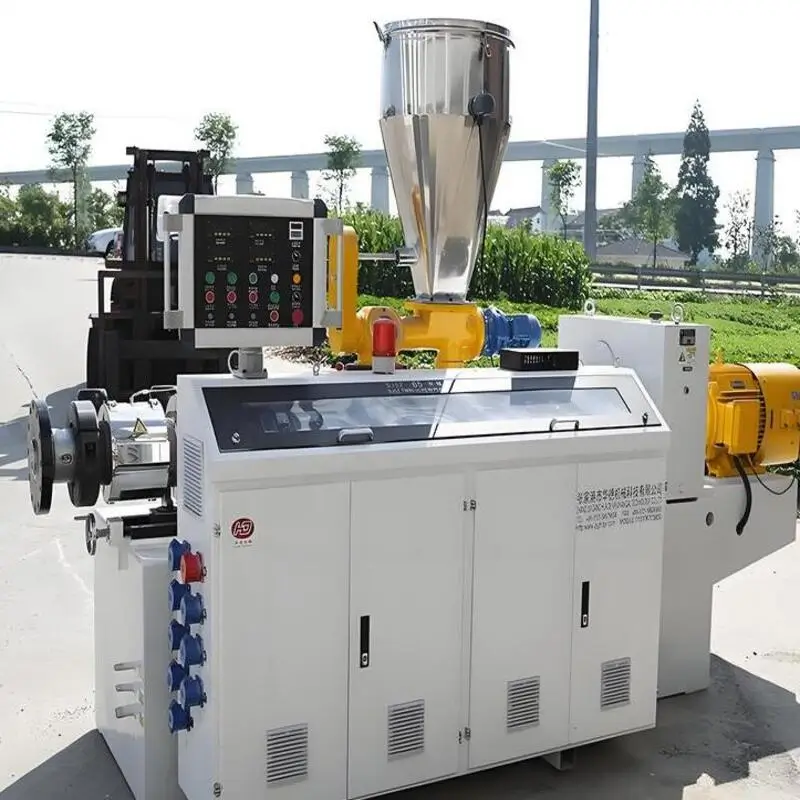The screw of a plastic extruder is one of the most important parts of an extruder, which directly affects the efficiency and quality of plastic processing. Understanding the structure and function of the screw and how to choose the right screw is crucial to improving production efficiency and reducing problems in the production process. In this article, we will analyze in depth the structure, working principle, types of plastic extruder screws and their impact on the extrusion process.
The screw melts plastic pellets through heat and mechanical action, affecting material transport, mixing, and product quality. Optimizing its design improves efficiency and reduces energy consumption.
Extruder screws are crucial for the plastic extrusion process.True
The screw helps in feeding, melting, and shaping the plastic material during extrusion, making it essential for producing high-quality extruded products.
Extruder screws are interchangeable between all types of plastics.False
Different extruder screws are designed for specific materials and extrusion processes.Due to the differing processing needs of these plastics.
- 1. What is the structure and function of a plastic extruder screw?
- 2. What is the working principle of a plastic extruder screw?
- 3. What is the influence of screw material on extrusion quality?
- 4. What is the influence of screw design on extrusion results?
- 5. What is the common failure and maintenance of screw?
- 6. How to choose the right screw?
- 7. What is the relationship between screws and productivity?
- 8. Conclusion
What is the structure and function of a plastic extruder screw?
A plastic extruder screw is made up of several parts, each with a different job at different stages. The screw design directly affects how the material is transferred, melted, mixed, and extruded.
A plastic extruder screw has four sections: feed, compression, melting, and metering. Each section plays a unique role in ensuring the plastic is evenly mixed and efficiently extruded.
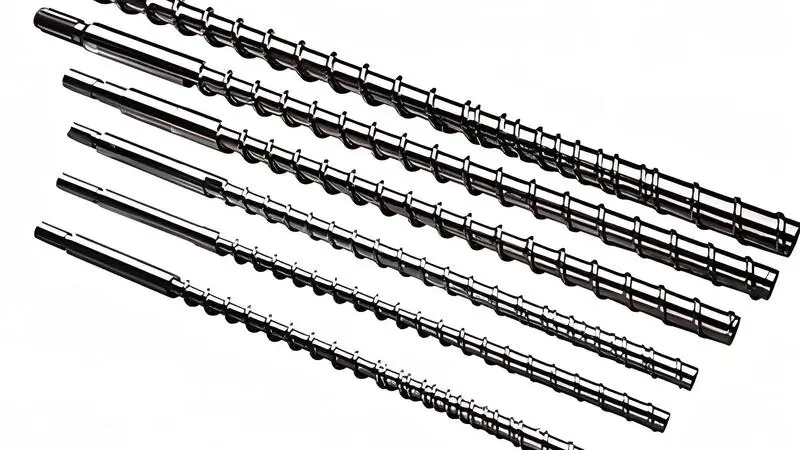
The feed section’s job
The feed section is responsible for moving the material from the hopper to the rest of the screw. The threads in this section are designed to be loose so the plastic pellets don’t get compressed too much.
The compression and melting section design
The compression section slowly increases the pressure on the material by making it take up less space. When it gets to the melting section, the heat and pressure work together to melt the plastic into a more liquid state.
The metering section’s precise control
The metering section controls how much material is being moved to make sure the plastic material flows evenly during extrusion. This helps avoid clogs or uneven flow problems.
The structure of a plastic extruder screw is designed to efficiently melt and convey plastic material.True
The extruder screw consists of multiple zones (feed, compression, and metering) that allow the plastic to be heated, melted, and conveyed in a controlled manner to ensure consistent extrusion.
The structure of a plastic extruder screw has no impact on the extrusion process.False
The structure of an extruder screw is crucial for controlling the heating, melting, and movement of plastic.
What is the working principle of a plastic extruder screw?
To master the extruder, you must understand how the screw works. The screw rotates and creates shear and pressure. This melts and mixes the plastic raw material at high temperatures so it can be processed efficiently.
The screw doesn’t just push the material forward. It also heats, compresses, and mixes the material. It does this by using the threads to shear the material. This melts the plastic.
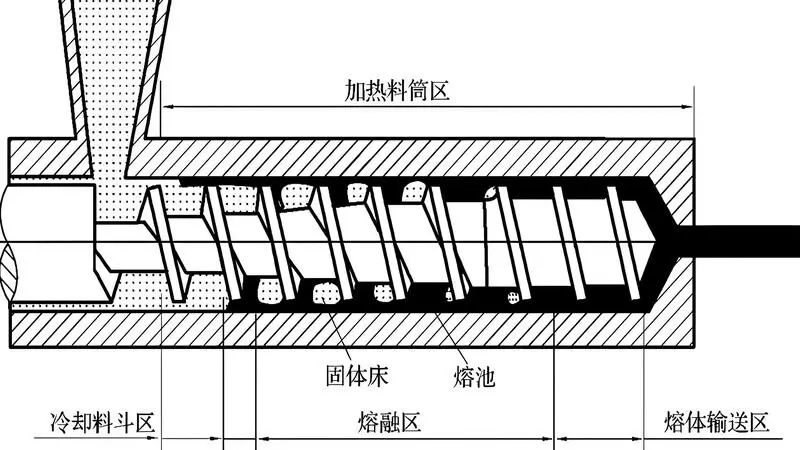
The screw rotates and moves the material
When the screw rotates, it pushes the material from the hopper to the outlet. It does this by using friction and shear. Different thread designs move the material at different speeds and with different levels of uniformity.
The material heats and melts
The screw heats the raw material as it moves through the different sections. It does this through heat conduction and mechanical shear. This creates a uniform melt of plastic.
The material mixes and disperses
The screw design determines how well the material mixes. The right thread shape and pitch can improve the quality of the melt. It can also prevent the material from being unevenly mixed.
The working principle of a plastic extruder screw is to melt and mix plastic material through rotation and heat.True
The extruder screw rotates inside the barrel, causing plastic pellets to move forward while being heated.
The working principle of a plastic extruder screw is solely based on heating the material without mixing or melting.False
The extruder screw not only heats the material but also mixes and compresses it to ensure a uniform melt and consistent flow.
What is the influence of screw material on extrusion quality?
The material of the screw is very important. It affects the wear resistance, corrosion resistance and service life of the screw. Choosing the right material can effectively improve production efficiency and reduce maintenance costs.
Common screw materials include alloy steel, stainless steel, etc. Screws made of different materials will show different wear resistance and corrosion resistance in the process of use.
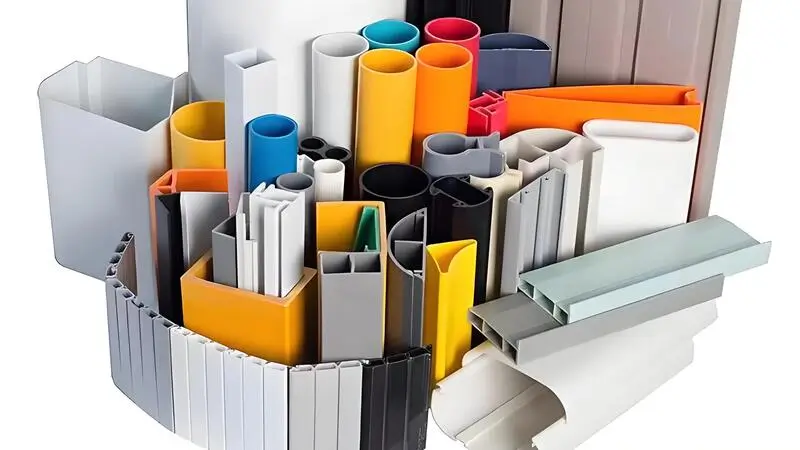
Advantages and applications of alloy steel screws
Alloy steel screws have good wear resistance. They are suitable for long-term and high-intensity work in the extrusion process, especially for the processing of hard plastics.
Corrosion resistance of stainless steel screws
Stainless steel screws have excellent corrosion resistance. They are suitable for processing plastics that need to be protected from chemical reactions, such as extrusion of polyvinyl chloride (PVC).
Selection tips for screws of different materials
When selecting screw materials, factors such as the type of plastic to be processed, the operating environment, and the production volume should be considered to ensure the durability and processing effect of the screws.
The material of the screw has a significant impact on extrusion quality.True
The screw material affects the wear resistance, heat transfer, and overall performance of the extruder.
The material of the screw does not affect extrusion quality.False
The screw material plays a crucial role in the extrusion process. It impacts factors such as heat dissipation, friction, and the ability to handle high pressures.
What is the influence of screw design on extrusion results?
Screw design is closely related to the extrusion effect. By adjusting the screw geometry, thread angle, length, and other parameters, the performance of the extruder can be optimized and the quality of plastic products can be improved.
The design parameters of the screw include pitch, thread angle, and length, etc., which affect the material transfer speed, shear force, temperature distribution, etc., and thus the extrusion effect.
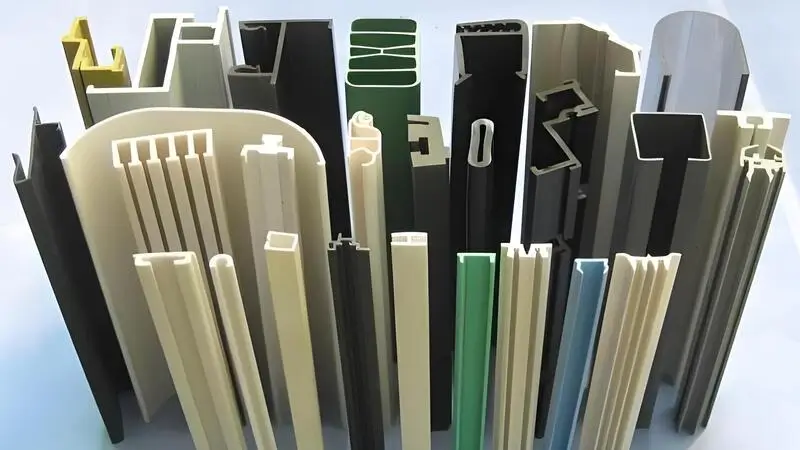
Selection of pitch and thread angle
Appropriate pitch and thread angle can balance the material transfer and shear speed, avoiding too fast heating or too slow flow resulting in non-uniformity of the plastic melt.
Multi-stage screw design
Through the design of different segments (e.g., feeding segment, compression segment, metering segment, etc.), the melting and mixing process of plastics can be better controlled, and the product quality can be improved.
Influence of screw length on processing effect
The length of the screw determines the processing time of the plastic, too long may lead to thermal degradation, too short may cause incomplete melting or insufficient mixing.
The design of the screw plays a crucial role in determining the extrusion results.True
The screw design in an extrusion process affects factors such as melt temperature, pressure, and material distribution.
The screw design does not influence the extrusion results significantly.False
The screw design is critical to achieving desired extrusion results. A poorly designed screw can lead to uneven melt flow, inconsistent product quality, and processing inefficiencies.
What is the common failure and maintenance of screw?
Screws can wear, corrode, or deform after long periods of use, which can affect the extruder’s performance and the quality of the final product. Regular maintenance and repair of the screw are essential.
Common screw failures include surface wear, thread damage, and bending. Regular inspections and timely repairs can extend the screw’s lifespan.
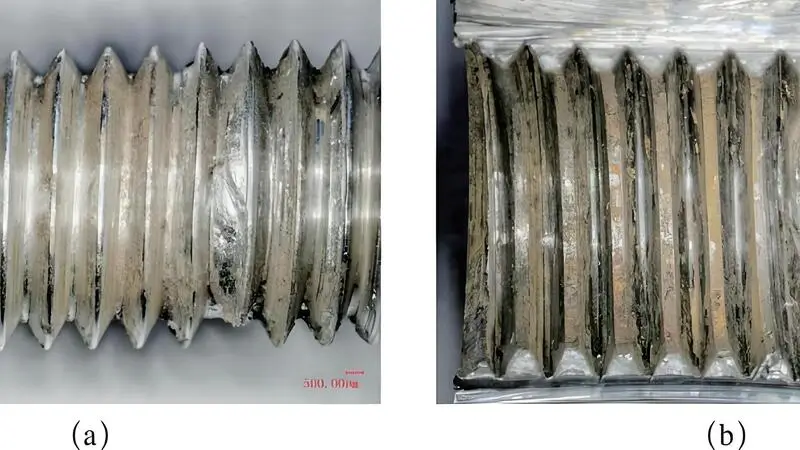
Causes and treatment of screw wear
Screw wear is usually caused by frequent high-temperature and high-pressure work environments or improper use. To repair, you can replace worn parts or rework the entire screw.
Preventive measures for screw surface corrosion
To reduce surface corrosion, you can use corrosion-resistant materials, coating technology, and create a reasonable work environment.
Screw deformation and repair technology
Screws can bend due to uneven forces during work. Regularly correcting the screw’s shape and ensuring it’s installed correctly can effectively prevent this problem.
Screw wear and damage is a common failure in plastic extrusion.True
Screw wear and damage are common failures in plastic extrusion due to high shear forces, material abrasiveness, and improper maintenance.
Screw wear and damage is not a concern in plastic extrusion.False
Screw wear and damage are significant concerns in plastic extrusion as they affect the efficiency and consistency of the extrusion process.
How to choose the right screw?
Choosing the right screw involves considering production requirements, plastic type, processing method, and equipment conditions. The right choice can greatly improve productivity and product quality.
Screw selection depends on the plastic type, production volume, extrusion speed, and other factors, with each requiring specific screw designs.
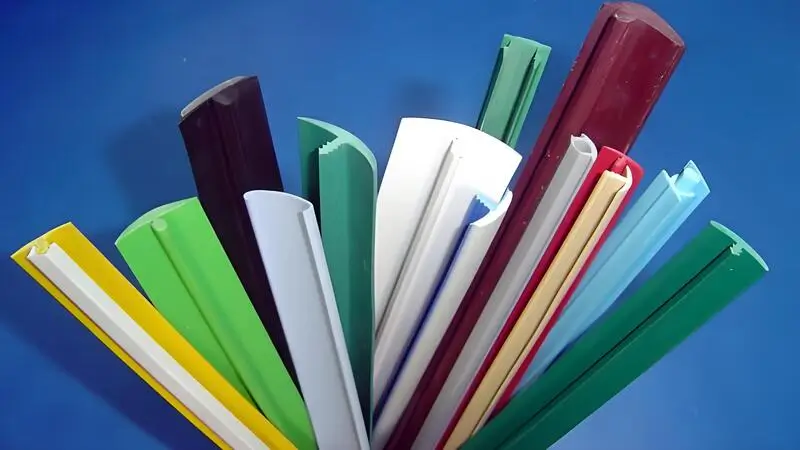
Choose a screw design based on the type of plastic
For heat-sensitive plastics, choose a screw design with low shear and uniform heating. For high-viscosity plastics, a screw with a higher compression ratio is needed.
Choose a screw based on production volume and speed
For high-volume production, choose a screw design with strong and stable conveying capacity. For low-volume production, choose a more flexible and efficient screw.
Consider equipment fit and ease of maintenance
Screw selection should also consider the specific configuration of the extruder to ensure a good match between the screw and the equipment, while also making it easier for later maintenance and replacement.
Choosing the right screw is crucial for optimizing plastic extrusion performance.True
Selecting the correct screw ensures proper material flow, improves processing efficiency, and minimizes defects such as die buildup or inconsistent product quality.
Choosing the right screw is not important for plastic extrusion.False
The screw choice plays a vital role in material melting, mixing, and conveying.
What is the relationship between screws and productivity?
The screw’s performance directly affects production efficiency. In large-scale production, the screw’s design and selection determine the extruder’s efficiency and economy.
Optimizing screw design and selecting the right material can effectively improve production efficiency, reduce energy consumption, improve product quality, and enhance overall production line benefits.
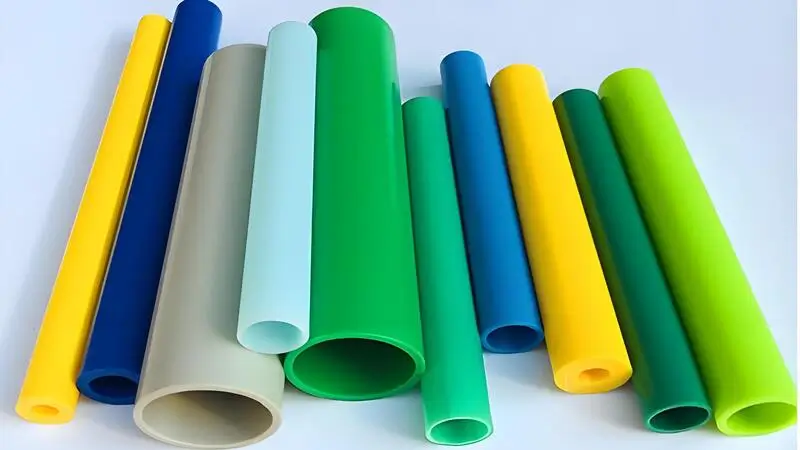
Screw design features that increase production
The right screw design can increase production speed and reduce material residence time, increasing production per unit time.
Screw technology that saves energy and reduces consumption
By reducing unnecessary heat consumption and optimizing the screw’s transmission efficiency, energy consumption can be reduced while increasing production efficiency.
Screw design for improved product quality
By optimizing the mixing and heating process, screw design ensures homogeneity of the plastic melt and improves the quality of the final product.
The design of screws directly influences the productivity of plastic extrusion.True
The design, size, and material of the screw affect the flow rate, melt quality, and overall efficiency of the extrusion process.
Screws have no effect on the productivity of plastic extrusion.False
Screws are critical to the extrusion process, as their design determines the material handling, mixing efficiency, and output rate.
Conclusion
The screw is the heart of a plastic extruder. It determines the quality and efficiency of plastic processing. Understanding the structure, working principle, material selection, design factors, and common failures of the screw can help the production line run more efficiently and stably. Regular maintenance and proper selection of the right screw can improve production efficiency, reduce production problems, improve product quality, and enhance production competitiveness.

